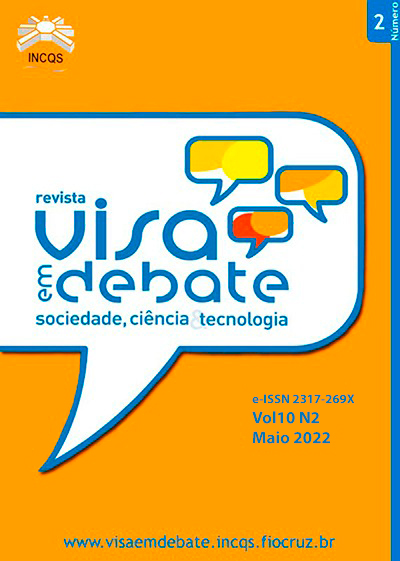Risks associated with the presence of SARS-CoV-2 in sewage and possible approaches to limit its spread through aquatic matrices
DOI:
https://doi.org/10.22239/2317-269x.01966Keywords:
Epidemiological Monitoring, Disease Outbreaks, Residual Waters, Water resources, Preventive medicineAbstract
Introduction: SARS-CoV-2 is a new type of coronavirus capable of infecting humans and cause the Coronavirus Disease (COVID-19), an illness that has causing enormous impacts in Brazil and worldwide. The disease, due to its high-level dissemination and lethality rates, was declared pandemic by the World Health Organization in the first half of 2020. Several studies have frequently indicated the detection of SARS-CoV-2 RNA fragments in samples from sewage networks, treatment plants and natural waters. The presence of SARS-CoV-2 in those environments has raised the possibility of transmission through the contact with contaminated waters and aerosols generated during their flow or treatment. Objective: Describe detection reports of the new coronavius in samples obtained from sewage networks, from waste sludges of treatment plants and from natural water bodies, and present the viability of this virus when artificially inoculated in those environments. Method: Integrative literature review based on scientific articles written in English or Portuguese, indexed in the Web of Science, Scopus, PubMed, ScienceDirect, Google Scholar and MedRxiv databases. Results: It was possible to highlight the risks that the SARS-CoV-2 poses to human and wildlife populations when present in wastewater, appropriate strategies to be used to limit the spread of this pathogen in aquatic matrices, and the importance of implementing epidemiological monitoring systems in those places. Conclusions: In order to reduce the risks of emerging and re- emerging outbreaks of COVID-19 through aqueous matrices, precautionary approaches regarding the presence of SARS-CoV-2 in those environments have been strongly recommended.
Downloads
Downloads
Published
Issue
Section
License
Copyright (c) 2022 Health Surveillance under Debate: Society, Science & Technology (Vigilância Sanitária em Debate: Sociedade, Ciência & Tecnología) – “Visa em Debate”

This work is licensed under a Creative Commons Attribution-NonCommercial 4.0 International License.
COPYRIGHT ALLOWANCE The author (s) hereinafter designated as the ASSIGNOR hereby assign and transfer, free of charge, the ownership of the copyrights related to this ARTICLE to the Vigilância Sanitária em Debate: Sociedade, Ciência & Tecnologia (Health Surveillance under Debate: Society, Science & Technology) – Visa em Debate, represented by FUNDAÇÃO OSWALDO CRUZ, established at Av. Brasil, nº 4365, Manguinhos, Rio de Janeiro, RJ, Brazil, CEP 21045-900, under the conditions set out below: (a) The terms and conditions set forth in this Agreement shall apply to the following: 1. The ASSIGNOR declares that they s(he) is (are) the author (s) and owner (s) of the copyrighted property of the ARTICLE submitted. 2. The ASSIGNOR declares that the ARTICLE does not infringe the copyrights and / or other property rights of third parties, that the disclosure of images (if any) has been authorized and that they s(he) assume(s) full moral and / or property liability for its content, before third parties. 3. THE ASSIGNOR assigns and transfers all copyrights relating to the ARTICLE to the ASSIGNEE, especially the rights of editing, publication, translation into another language and reproduction by any process or technique. The ASSIGNEE becomes the exclusive owner of the rights related to the ARTICLE, and any reproduction, totally or partially, is prohibited in any other means of publicity, printed or electronic, without prior written authorization from the ASSIGNEE. 4. The assignment is free and, therefore, there will be no remuneration for the use of the ARTICLE by the ASSIGNEE.






